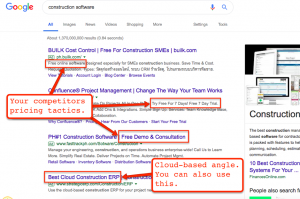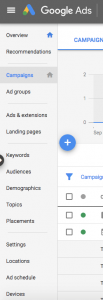
The talent selection process is constantly evolving to meet the demands of changing job markets and new innovations.
From gamification to mobile-based assessments, the technology involved in talent acquisition is, in many cases, emerging faster than the supportive research. Here’s a look at what lies ahead in the world of talent assessment.
Throughout our blog series, How to Transform Your Company’s Talent IQ, we have examined how data analytics and talent-driven intelligence can be used by businesses to drive hiring strategies and make accurate hiring decisions.
In our final post of the series, we’ll discuss what the future holds for talent assessment.
Pre-Hire Assessments Will Get Shorter
As recently as the mid-2000’s, it wasn’t uncommon to see assessments that were 90-100 minutes long. But with a workforce that possesses an ever-shrinking attention span and an increasing impatience with the hiring process, businesses have been scrambling to improve their strategies keep quality talent from jumping out of their talent pools.
Today, particularly for frontline and entry-level roles, companies push to cut testing time to less than 30 minutes.
Some talent assessment solution providers have successfully achieved, and even surpassed, these goals after multi-year research and development initiatives that relied heavily on computer adaptive tests. For instance, FurstPerson’s frontline assessments include a work-sample simulation and personality assessment that only takes approximately 18 minutes to complete.
Job Simulations Will Become More Common
More than any other type of assessment, job simulations allow candidates to understand the job itself – both the difficult and fun aspects. In turn, employers can determine whether or not the candidates actually have the skills and abilities to succeed once they’re hired.
Gamification in Recruiting
By and large, gamification is used to measure the personality and cognitive abilities of applicants. Companies are increasingly adopting talent assessments that allow them to measure psychological indicators in the context  of a game that does not necessarily appear to be work-related to the applicant.
of a game that does not necessarily appear to be work-related to the applicant.
Many organizations have begun to embrace gamification, because it presents a number of advantages over more traditional types of assessments. For example:
- It’s interesting to applicants, and it caters to gamer generations.
- Because of the entertainment value, candidates might be more likely to complete those assessments.
- Since candidates might view it as a real competition, they may be more likely to put forth a better effort.
However, for as many advantages as gamification presents, there are a number of risks associated with jumping on the gamification bandwagon without first vetting the validity and generalizability of these applications.
Although they may seem like modernized versions of an old concept, gamified assessments are, in some respects, going back in time. While they’ve created a more engaging and interactive environment, they are often less job-relevant than many current assessments in the market today.
Unfortunately, we still don’t know how well-gamified assessments predict performance across organizations or for specific jobs. It’s easy for companies to promote gamified assessments because they do, after all, provide a profoundly more entertaining candidate experience, but what real-world outcomes do the data provided by the assessments predict? This largely remains to be determined.
Interactive Situational Judgment Tests
Situational judgment tests are a type of psychometric test used to measure the behaviors and attitudes of candidates in work-related scenarios. Historically, these tests have been presented to candidates as static, multiple-choice tests providing the test-taker with realistic, hypothetical scenarios. They are designed to determine how individuals will behave in certain situations.
We’re now beginning to see more and more interactive situational judgment tests. For instance, modern simulations allow candidates to perform the specific functions of a contact center representative in real time while auditioning for a job.
Work Sample Simulations
There are few better ways to predict how well a job applicant will perform than by having him or her complete a portion of the actual work required by the job.
Work sample simulations are increasingly being adopted by companies hiring frontline employees. Rather than developing an assessment that has little to do with the actual job itself, these talent selection tools combine the best of both worlds – gamification and situational judgment tests – to create an interactive, immersive experience that’s a microcosm of an actual job function. This way, candidates can get a feel for the real-world experience of working in a call center position, a field sales job, or as a chat sales agent.
Not only that, but the capacity to build such tests at a more rapid rate is increasing as well. FurstPerson’s Rapid Simulation Builder allows workforce scientists to build simulations more efficiently by importing content imagery, multimedia elements, and other types of designs into a platform, while tailoring each simulation to an organization’s specific needs. Within the platform, a simulation can be compiled and designed from start to finish, creating workflows, questions, or any type of timer required for the test.
All of these elements can be pulled together into a seamless simulation, which saves a significant amount of time and money.
While in the past it may have taken up to six months for a development team to build a simulation, talent assessment solution providers like FurstPerson can build them in five to ten businesses days.
Businesses Will Shift from Off-the-Shelf to Fully-Customized Talent Acquisition Software
Historically, talent assessment companies have designed generic pre-hire tests that were meant to fit all companies and industries equally. However, these generic, off-the-shelf tests don’t provide any competitive advantage from one business to the next.
But things are beginning to change. Many companies today are embracing their unique positions and niches in their respective markets. From small and medium-sized businesses to Fortune 100 companies, organizations have begun to understand the true value of distinguishing themselves as employers in the competitive talent selection process.
Using technology that allows companies to customize and deploy products in a cost-effective way is something businesses across the board are going to embrace, because it will lead them to competitive differentiation in their talent acquisition processes. That means an increased quality of hire, and better employee productivity.
Business & Finance Articles on Business 2 Community
(114)
Report Post









